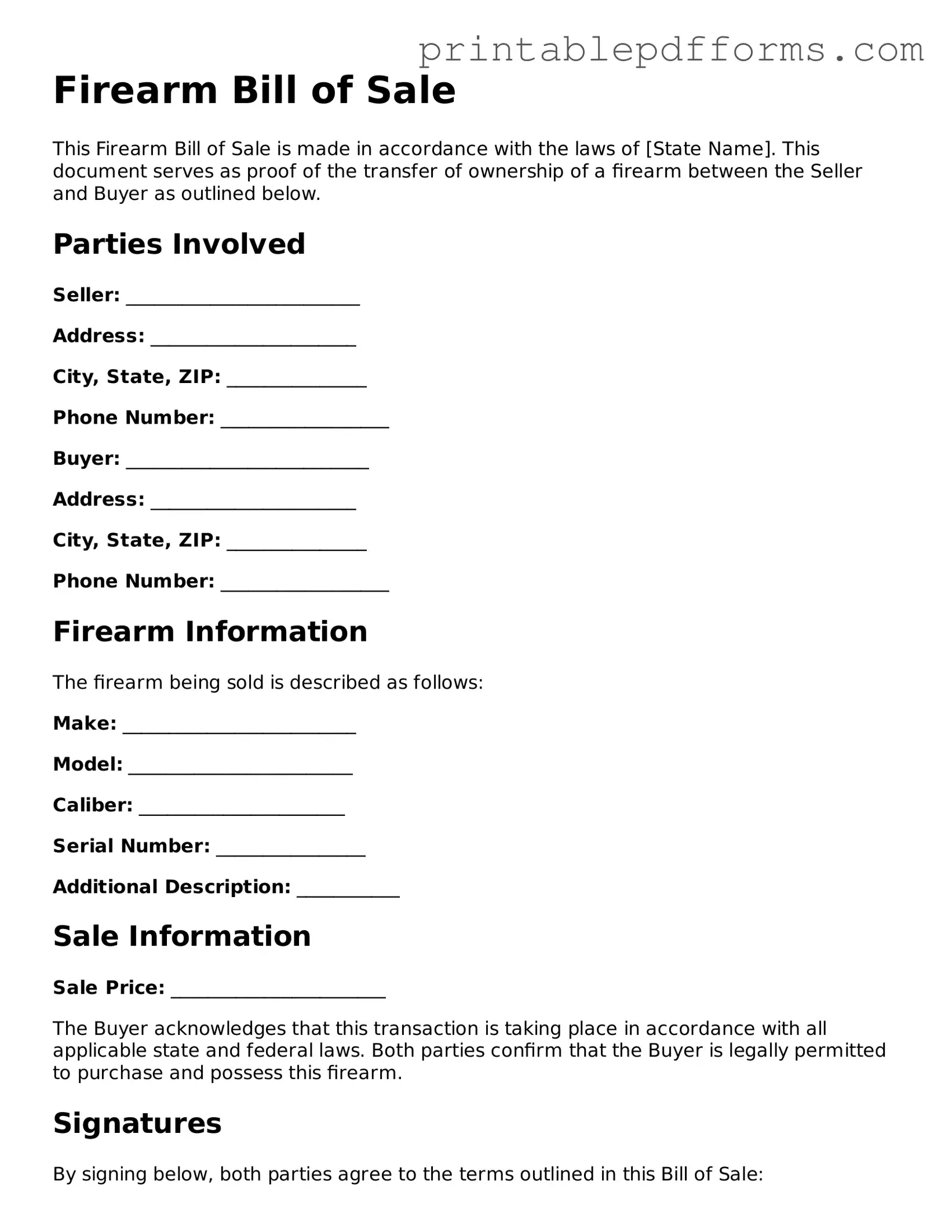Firearm Bill of Sale
This Firearm Bill of Sale is made in accordance with the laws of [State Name]. This document serves as proof of the transfer of ownership of a firearm between the Seller and Buyer as outlined below.
Parties Involved
Seller: _________________________
Address: ______________________
City, State, ZIP: _______________
Phone Number: __________________
Buyer: __________________________
Address: ______________________
City, State, ZIP: _______________
Phone Number: __________________
Firearm Information
The firearm being sold is described as follows:
Make: _________________________
Model: ________________________
Caliber: ______________________
Serial Number: ________________
Additional Description: ___________
Sale Information
Sale Price: _______________________
The Buyer acknowledges that this transaction is taking place in accordance with all applicable state and federal laws. Both parties confirm that the Buyer is legally permitted to purchase and possess this firearm.
Signatures
By signing below, both parties agree to the terms outlined in this Bill of Sale:
Seller's Signature: ____________________ Date: _______________
Buyer's Signature: ____________________ Date: _______________
Witness
This transaction must be witnessed for it to be valid:
Witness Name: ____________________
Witness Signature: ____________________ Date: _______________
It is recommended that this Bill of Sale be kept in a legal file for future reference.
